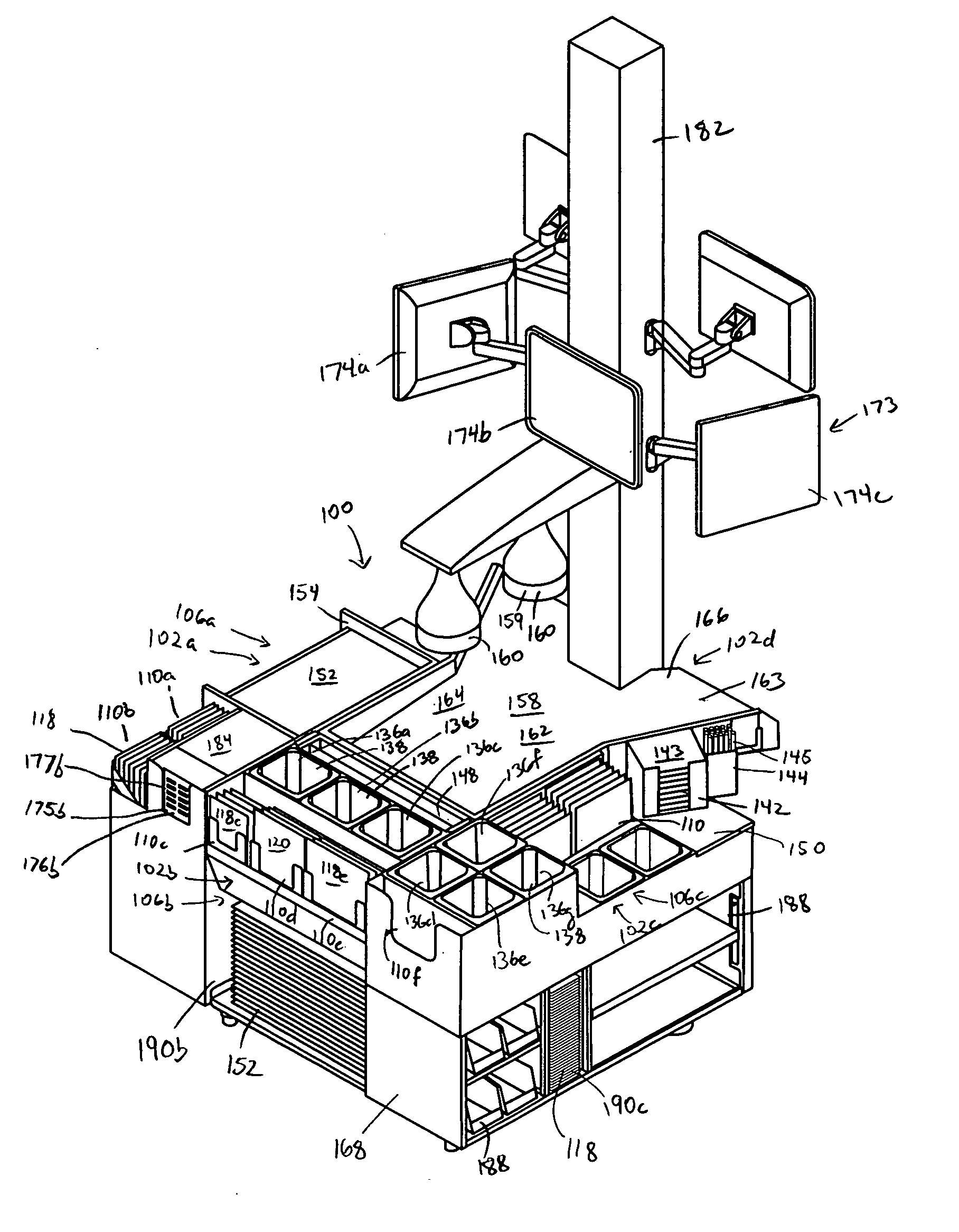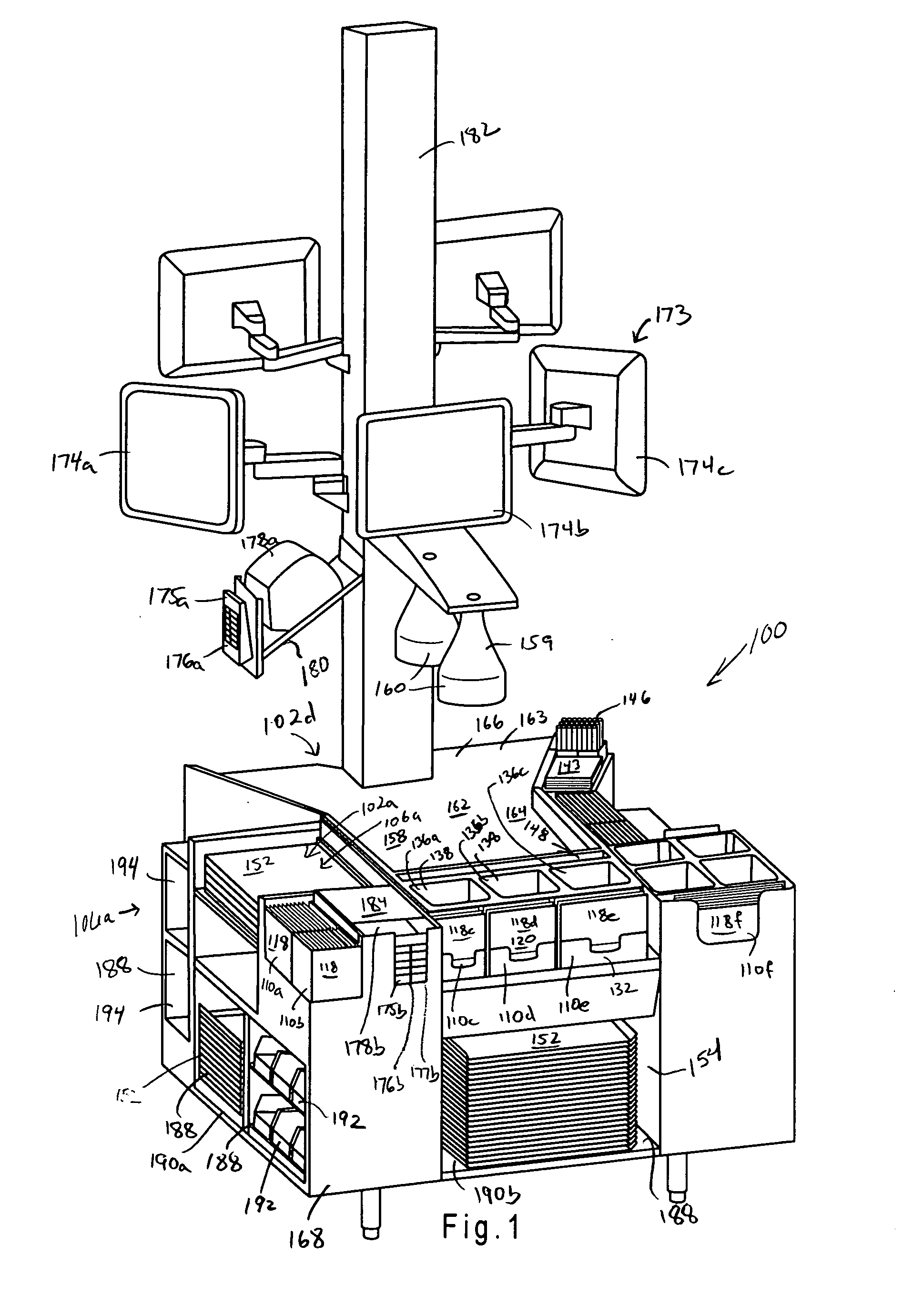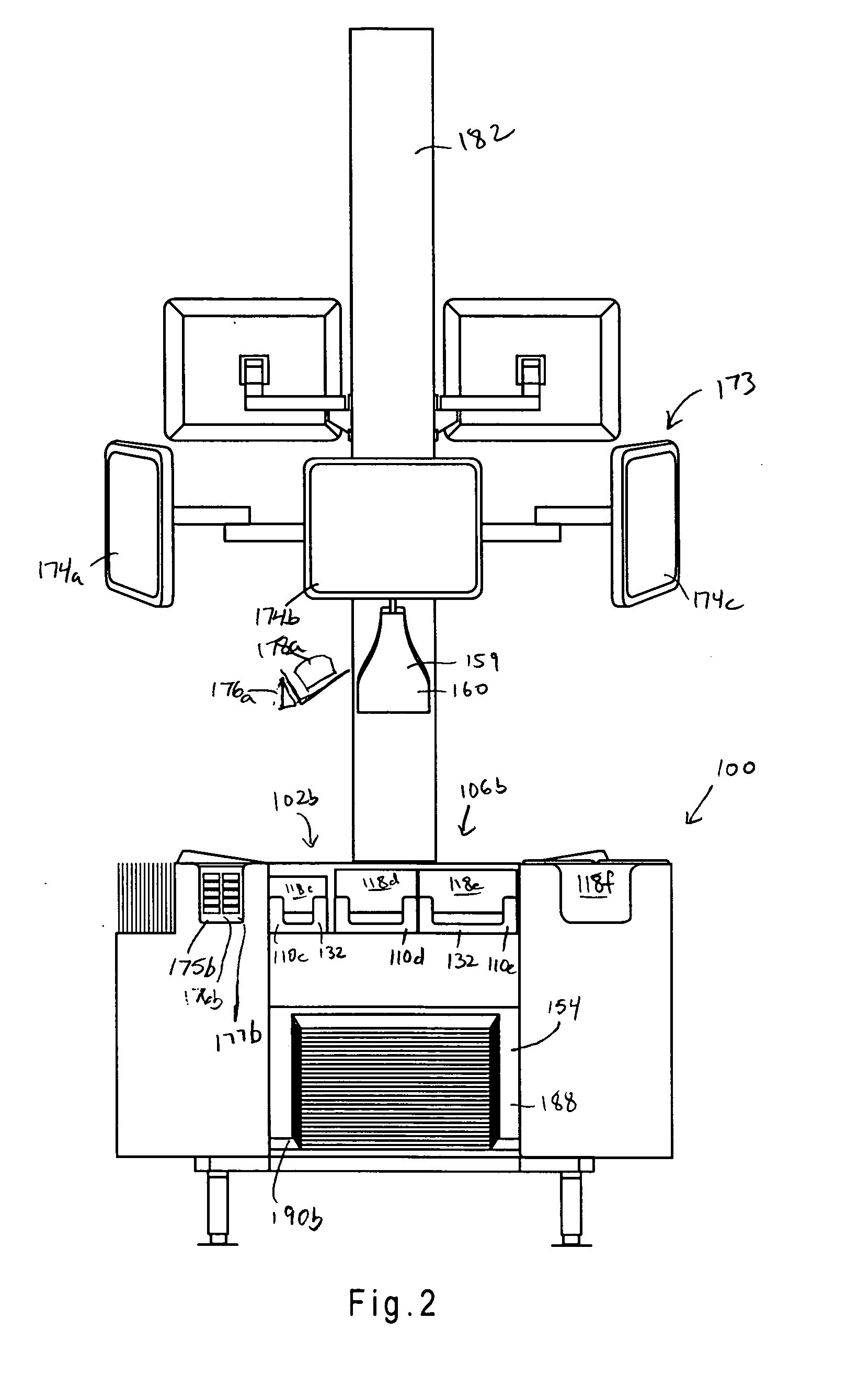Device, system and method for assembling food orders
- Summary
- Abstract
- Description
- Claims
- Application Information
AI Technical Summary
Benefits of technology
Problems solved by technology
Method used
Image
Examples
first embodiment
[0038]The food order assembly device of the invention may be in a desired configuration selected from a number of different suitable configurations. Referring to FIGS. 1-4, a first embodiment, food order assembly device 100, is configured for three-sided operation. In particular, food order assembly device 100 has four side regions 102a-102d. Food order assembly device 100 may be in any desired shape, although a substantially straight-sided and rectangular shape is preferred. Side regions 102a-102c each defines a respective one of the total of three work or order assembly areas 106a-106c, respectively. Order assembly area 106b is optimized to be the primary side for assembling orders from front counter orders or in-restaurant customer orders. Order assembly area 106a is a secondary side for assembling orders from front counter or in-restaurant customer orders and can be used, for example, when the volume of orders exceeds the capacity of order assembly area 106b. Order assembly area...
fourth embodiment
[0055]the invention is a food order assembly device 400 shown in FIGS. 10-14. For convenience, parts of device 400 will be referred to by item numbers in the range of 400-499. Although the item numbers for this embodiment frequently do not match the item numbers for similar parts of the other embodiments, parts of device 400 are or can be generally similar to those of devices 100, 200, or 300 previously described unless otherwise specified. Order assembly device 400 has four side regions 402a-d and three order assembly areas 406a-c. Order assembly area 406b has a top, horizontal planar surface 408. Surface 408 is divided into a plurality of sub-assembly areas 410a-h. The sub-assembly areas 410 are divided by dividers 412. Dividers 412 may be printed lines on surface 408, lines etched in surface 408, or raised dividers. Sub-assembly areas 410 may be numbered with designations or numerals 414. Preferably, each sub-assembly area 410a-h corresponds to a specific one of point-of-sale (“P...
embodiment 700
[0062]A concave embodiment 700 of a food order assembly device is shown in FIG. 21. Order assembly device 700 has modules 703a-d and order assembly areas 706a-b. Each order assembly area has container receptacles 710 and receptacles 736 which may be used with pans. Trays 752 are located on planar surface 753.
[0063]Device bases 168, 268 and 368 can have a variety of different sizes based on the space available at a restaurant, the things to be held in the device, the types and amount of customers to be served, etc. Device bases 168, 268 and 368 may be nominally about 36″ tall, 48″ deep and 48″ wide, not including any bag receptacles mounted to the exterior of the base. Holding areas 158, 258 and 358 may be, for example, nominally about 20″ deep and 25″ wide, 18″ deep and 20″ wide not including ramps 166, 266 or 366, or any other dimensions suitable for the food to be held. Typically, bottom 162, 262, 362 is recessed below the top of bases 168, 268 and 368 by about 4″ in the back and ...
PUM
 Login to View More
Login to View More Abstract
Description
Claims
Application Information
 Login to View More
Login to View More - R&D
- Intellectual Property
- Life Sciences
- Materials
- Tech Scout
- Unparalleled Data Quality
- Higher Quality Content
- 60% Fewer Hallucinations
Browse by: Latest US Patents, China's latest patents, Technical Efficacy Thesaurus, Application Domain, Technology Topic, Popular Technical Reports.
© 2025 PatSnap. All rights reserved.Legal|Privacy policy|Modern Slavery Act Transparency Statement|Sitemap|About US| Contact US: help@patsnap.com



